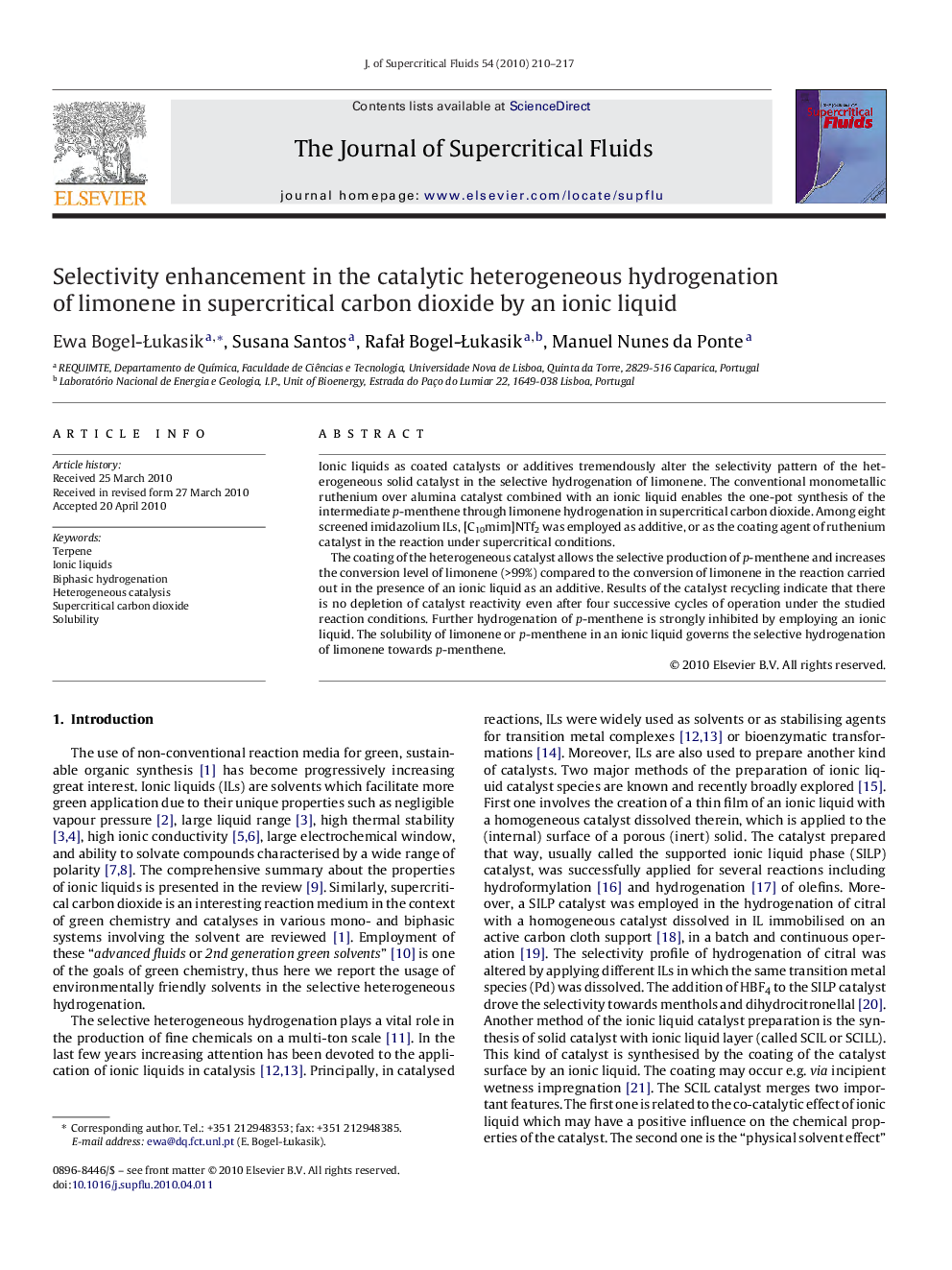| Article ID | Journal | Published Year | Pages | File Type |
|---|---|---|---|---|
| 231481 | The Journal of Supercritical Fluids | 2010 | 8 Pages |
Ionic liquids as coated catalysts or additives tremendously alter the selectivity pattern of the heterogeneous solid catalyst in the selective hydrogenation of limonene. The conventional monometallic ruthenium over alumina catalyst combined with an ionic liquid enables the one-pot synthesis of the intermediate p-menthene through limonene hydrogenation in supercritical carbon dioxide. Among eight screened imidazolium ILs, [C10mim]NTf2 was employed as additive, or as the coating agent of ruthenium catalyst in the reaction under supercritical conditions.The coating of the heterogeneous catalyst allows the selective production of p-menthene and increases the conversion level of limonene (>99%) compared to the conversion of limonene in the reaction carried out in the presence of an ionic liquid as an additive. Results of the catalyst recycling indicate that there is no depletion of catalyst reactivity even after four successive cycles of operation under the studied reaction conditions. Further hydrogenation of p-menthene is strongly inhibited by employing an ionic liquid. The solubility of limonene or p-menthene in an ionic liquid governs the selective hydrogenation of limonene towards p-menthene.
Graphical abstractThe selectivity enrichment was illustrated by a sequential limonene hydrogenation in supercritical carbon dioxide to p-menthene with an IL additive comparing to “IL-free” conditions. Ready-made solid catalysts with ILs, in which the surface of the solid catalyst was coated by IL, offered a method for the augmentation of the selectivity towards the intermediate with the concurrent increase of limonene conversion.Figure optionsDownload full-size imageDownload as PowerPoint slide
